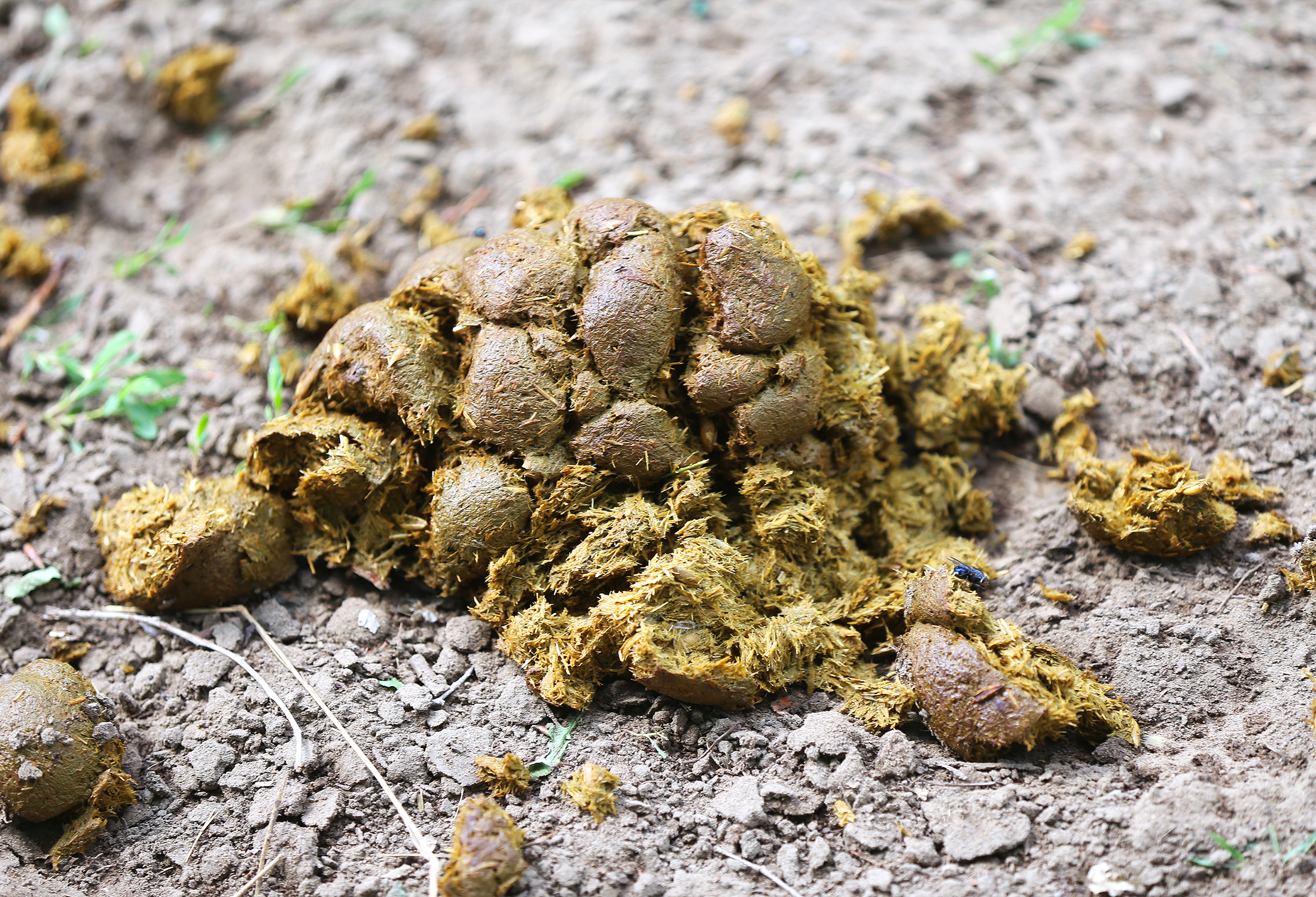
It may not be a subject we always want to talk about, but let's discuss droppings!
Your horse's digestive tract is very closely linked to general health, with over 70% of their total immunity coming from there. Their droppings are a reflection of how that digestive tract is doing, so knowing a little about what to look for can help you keep an eye on what is happening inside. Just as diamonds are famous for their 3 C's, so droppings can have 3 C's too – Count, Colour and Consistency.

Count
Horses pass approximately the same number of droppings each day. Knowing what is normal for your horse is important, as any changes – up or down – could be a sign of an internal problem. Mares and geldings typically pass around eight to twelve droppings per day, with stallions and foals passing more. Horses fed a higher proportion of dried forage will pass relatively more droppings than a horse on grass. Although horses are good at handling dried forage they cannot digest all they eat and so more droppings result.
Too few droppings can result from simply eating less, particularly less fibre. However, if droppings stop altogether, or there are signs of colic, then there is risk of an intestinal blockage and your vet should be contacted immediately. An increasing number may be due to diarrhoea, microbiome disturbance, stress or excitement.
Colour
The diet has the biggest effect on the colour of your horse's droppings, but they should be on a scale from green to brown. Horses on fresh grass will have greener colour, with the darker brown colour for those on hay based diets. Some commercial diets may cause an orange tinge to be seen.
If a yellow colour is noticed it indicates mucous from the gut lining, and suggests the passage through the gut has slowed. Monitor the horse closely, increase water intake by soaking forage and feeding electrolytes. Discuss with your vet if it persists, or if the mucous is obvious.
If red is seen, indicating blood in the droppings, contact your veterinarian immediately.
Consistency
The consistency can be an important indicator of digestive health, so do monitor closely for any changes. Broadly speaking, consistency can be graded on a scale from 1 to 7.
Finally, it's not just the 3 C's to monitor droppings for. Look out for worms, which would indicate a de-worming programme is needed, un-chewed fibres which highlight dentition issues, or evidence of sand accumulation from grazing on dry ground.
Our horses' droppings tell us so much about their health, so next time you're mucking have a quick look and see what they say about your horse. Once you are happy with your horse's droppings, maintain a healthy digestive tract and stable hindgut microbiome with GastriAid.
NAF © 2024 | NAF is a trading name of Greencoat Limited, registered in England & Wales. Greencoat Ltd - Registered address: Weston Centre, 10 Grosvenor Street, London, W1K 4QY. Registered Number: 1560 108. Registered in England & Wales.Number: 1560108 VAT Registration Number: 378 9295 80